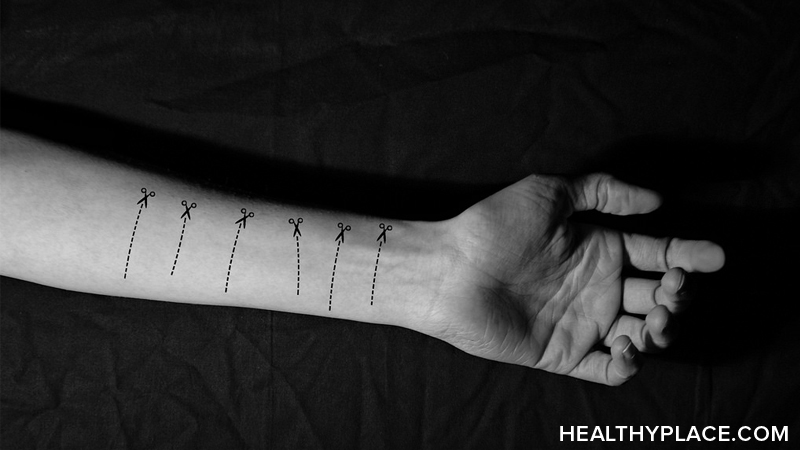Explaining Self-Harm Scars to Others

Unfortunately, people who self-harm not only have psychological scars from their behavior but physical ones too, and explaining self-harm scars to others can seem almost like an impossible task. People with self-harm scars (also known as self-injury scars or self-mutilation scars) may be embarrassed and not want to talk about what was undoubtedly a painful point in their lives. (read: I Cut Myself: The Shame and Secrecy of Self-Harm) This is completely understandable but there will always come a time when self-injury scars will have to be explained to someone in your life. (That's why this article about how to tell someone you self-injure might be helpful.)
Self-harm scars may result from the different ways to self-harm, like burning or cutting, and self-mutilation scars most commonly appear on the:1
- Arms
- Hands
- Wrists
- Thighs
- Stomach
Depending on their placement, it can be hard to hide self-mutilation scars so for some people, more explanation is needed than for others.
Isolation and Self-Harm Scars
Acts of self-harm, and to some extent the scars from self-harm, tend to keep people at a distance. Self-injury is something done in private and often with shame and guilt attached to the activity. These feelings may then also be associated with the self-injury scars. Many don't want to share the evidence of their shame and guilt.
This tends to bring about loneliness and isolation and may make a person believe that they are alone in their self-harm. This isn't true, however. Many people, of all ages, self-harm (yes, even adults self-harm) – the act is far more common than most people believe. But like you, most people don't want to talk about it. (See these self-injury stories.)
Opening up about self-mutilation scars can help break the isolation and help you to understand that you are not alone and people do love you in spite of what you have done in the past or even the self-injury in which you currently engage in.
Talking About Self-Injury Scars
It may seem like no one will be able to understand your self-injury or your self-injury scars, but this isn't true. Many people have experience with self-mutilation, and even those who don't can have understanding and empathy for what you have been through.
When talking about self-mutilation and self-mutilation scars:2
- Focus on your feelings – self-harm scars aren't about the physical, they are about the emotional. The details about what you physically did matter a lot less than the feelings that drove you to that place and people may be able to identify with your emotions more readily than your acts.
- Tell the person why you're talking to them about self-harm scars – you probably aren't talking about your self-mutilation scars for no reason. Likely, you want understanding, closeness and support and it's okay to tell someone that. When you tell someone what you need, you are much more likely to get it.
- Communicate in a way in which you feel comfortable – while it might always be ideal to have a face-to-face communication about self-mutilation scars, that might not be something you are comfortable with, so pick a method that makes sense for you. You might start the conversation in an email or letter, although you will still likely have to follow-up face-to-face. And remember, you don't have to share every detail – only share what you're comfortable with right now.
- Give the person time to process what you're telling them – what you're telling someone can be hard for them to immediately accept, so give them time to think about what you're saying. It's hard to hear that someone you love has been hurting his or herself and it's natural to act surprised at first. This doesn't mean the person won't understand, it just means they need some time to adjust to the news.
- Provide education about self-harm – if the person doesn't know about self-harm provide a way for him or her to learn about it. Provide a book on self-harm or give them the HealthyPlace.com Self-Injury website address where they can learn more, including self-harm statistics and facts. Knowledge dispels fear and creates understanding.
And remember, talking about self-injury scars may not go as well as you like sometimes, but that doesn't mean that everyone will react in the same way. Some people will be supportive.
(If you're on the other side, meaning someone is telling you they self-injure, your reactions to their self-injury disclosure are so important.)
APA Reference
Tracy, N.
(2021, December 21). Explaining Self-Harm Scars to Others, HealthyPlace. Retrieved
on 2026, January 7 from https://www.healthyplace.com/abuse/self-injury/explaining-self-harm-scars-to-others



